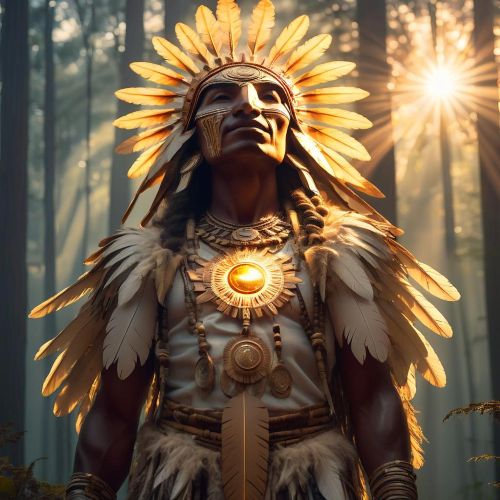Choctaw Mythology
Choctaw mythology forms a vital part of the cultural identity of the Choctaw people, one of the largest Native American nations in the southeastern United States. Rooted in oral storytelling and passed down through generations, these myths preserve sacred knowledge about creation, the natural world, and the values that guide human life. For the Choctaw, mythology was not simply entertainment but a way of teaching respect, resilience, and responsibility within the community. The stories reveal a worldview in which the land itself is sacred and every part of nature—rivers, animals, trees, and the sky—carries spiritual meaning. By exploring Choctaw mythology, one encounters a culture deeply shaped by the land and by the balance between people and the environment.
Among the most well-known stories in Choctaw mythology is the legend of Nanih Waiya, the sacred mound that is said to be the birthplace of the Choctaw people. According to tradition, the first Choctaw emerged from this mound, making it a symbol of origins, identity, and connection to the earth. Other stories focus on the creation of the world and the relationship between humans and animals, emphasizing the need for balance and respect. These myths often highlight themes of cooperation, humility, and gratitude, which were essential values for survival and harmony in traditional Choctaw life.
Trickster figures also play an important role in Choctaw mythology, reflecting human flaws and teaching moral lessons through humor and mischief. These characters demonstrate the consequences of greed, pride, or foolishness, while also showing the importance of cleverness and adaptability. In addition, Choctaw myths often explain natural phenomena, such as the origin of the sun, moon, and stars, or the behavior of animals. By weaving together stories of the natural and spiritual worlds, Choctaw mythology reinforced the idea that humans are just one part of a greater interconnected whole.
Today, Choctaw mythology remains an important cultural foundation for the Choctaw people. Elders and storytellers continue to preserve these traditions, while modern writers, artists, and educators adapt them for younger generations and global audiences. The sacred mound of Nanih Waiya still stands as a powerful symbol of identity, reminding the community of its enduring connection to its origins. Beyond Choctaw communities, these myths inspire respect for Indigenous wisdom and environmental harmony. Exploring Choctaw mythology offers not only fascinating legends but also timeless lessons about resilience, balance, and cultural pride that continue to resonate in the modern world.


